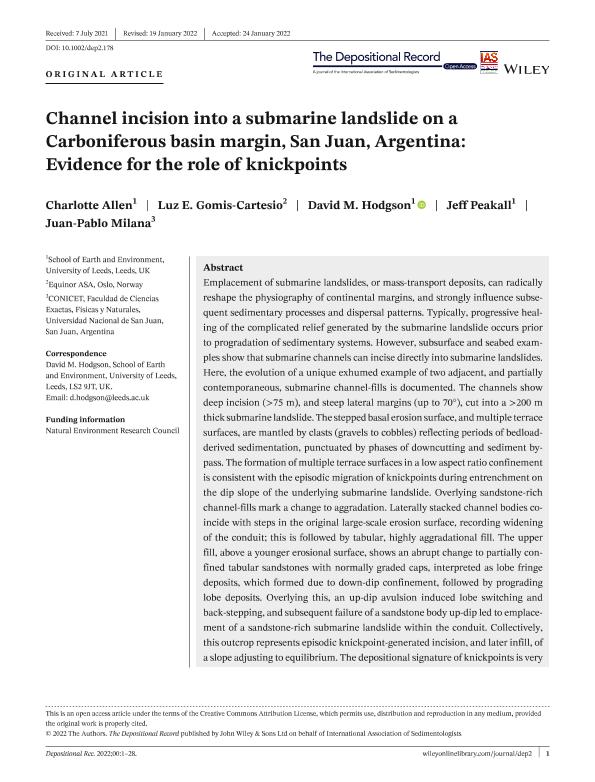Artículo
Channel incision into a submarine landslide on a Carboniferous basin margin, San Juan, Argentina: Evidence for the role of knickpoints
Fecha de publicación:
06/2021
Editorial:
John Wiley & Sons
Revista:
Depositional Record
ISSN:
2055-4877
Idioma:
Inglés
Tipo de recurso:
Artículo publicado
Clasificación temática:
Resumen
Emplacement of submarine landslides, or mass-transport deposits, can radically reshape the physiography of continental margins, and strongly influence subsequent sedimentary processes and dispersal patterns. Typically, progressive healing of the complicated relief generated by the submarine landslide occurs prior to progradation of sedimentary systems. However, subsurface and seabed examples show that submarine channels can incise directly into submarine landslides. Here, the evolution of a unique exhumed example of two adjacent, and partially contemporaneous, submarine channel-fills is documented. The channels show deep incision (>75 m), and steep lateral margins (up to 70°), cut into a >200 m thick submarine landslide. The stepped basal erosion surface, and multiple terrace surfaces, are mantled by clasts (gravels to cobbles) reflecting periods of bedload-derived sedimentation, punctuated by phases of downcutting and sediment bypass. The formation of multiple terrace surfaces in a low aspect ratio confinement is consistent with the episodic migration of knickpoints during entrenchment on the dip slope of the underlying submarine landslide. Overlying sandstone-rich channel-fills mark a change to aggradation. Laterally stacked channel bodies coincide with steps in the original large-scale erosion surface, recording widening of the conduit; this is followed by tabular, highly aggradational fill. The upper fill, above a younger erosional surface, shows an abrupt change to partially confined tabular sandstones with normally graded caps, interpreted as lobe fringe deposits, which formed due to down-dip confinement, followed by prograding lobe deposits. Overlying this, an up-dip avulsion induced lobe switching and back-stepping, and subsequent failure of a sandstone body up-dip led to emplacement of a sandstone-rich submarine landslide within the conduit. Collectively, this outcrop represents episodic knickpoint-generated incision, and later infill, of a slope adjusting to equilibrium. The depositional signature of knickpoints is very different from existing models, but is probably reflective of other highly erosional settings undergoing large-scale slope adjustment.
Archivos asociados
Licencia
Identificadores
Colecciones
Articulos(CIGEOBIO)
Articulos de CENTRO DE INVESTIGACIONES DE LA GEOSFERA Y BIOSFERA
Articulos de CENTRO DE INVESTIGACIONES DE LA GEOSFERA Y BIOSFERA
Citación
Allen, Charlotte; Gomis Cartesio, Luz E.; Hodgson, David M.; Peakall, Jeff; Milana, Juan Pablo; Channel incision into a submarine landslide on a Carboniferous basin margin, San Juan, Argentina: Evidence for the role of knickpoints; John Wiley & Sons; Depositional Record; 8; 2; 6-2021; 628-655
Compartir
Altmétricas




